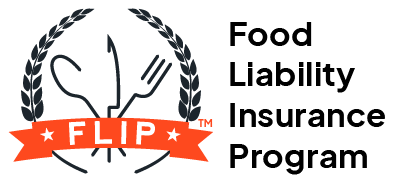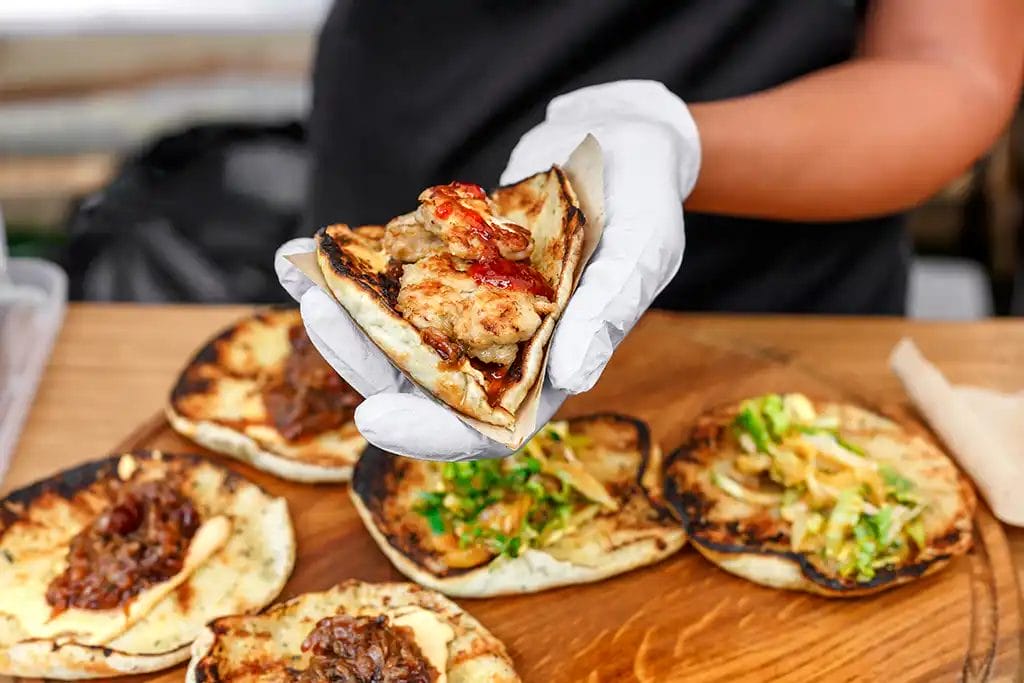Last Updated: May 7, 2024
Choosing an effective food pricing strategy is one of the most important things you will do as a business owner.
Preparing delicious dishes that sell is the ultimate goal. However, if your food costs don’t justify what you’re bringing in, you won’t be in business for long.
Learning how to price food products is a matter of understanding how to balance your direct and overhead expenses to maximize your profit across your entire menu.
Consumers are eating out more than ever, and your food business deserves a piece of that pie. Whether you’re just starting out or you’re a seasoned pro, these four pricing strategies can help you grow your food business.
4 Menu Pricing Strategies to Calculate the Selling Price for Food
Whether you run a food truck, a catering company, or any other type of food business, knowing how to correctly price your products is a top priority.
Determining the right pricing strategy depends on several things, including your goals, the area in which you operate, and personal preferences.
Consider your unique business needs as you review the following food pricing methods.
1. Calculate Your Prices Based on Ideal Food Cost Percentage
Food cost percentage is a statistic used by food businesses to show how much revenue is used to purchase ingredients. It can also be used to help you determine the best prices for your menu items.
To calculate your ideal food cost percentage, divide your total food costs by the amount of your total food sales:

Most businesses’ ideal food cost percentage falls between 28%–35%, meaning that 28%–35% of revenue goes toward purchasing new supplies every week. You can also simply choose a number as your ideal food cost percentage.
As an example of how this formula functions, let’s say your total food costs are $3,000 and your total food sales are $10,000. If we plug those numbers into the equation, it looks like this:
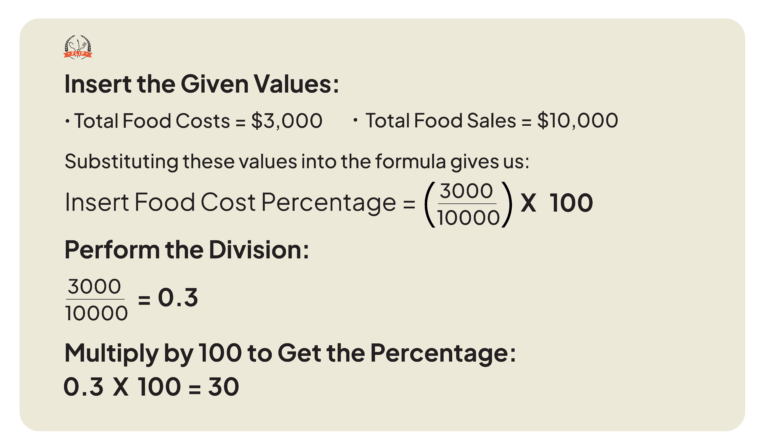
In this case, our ideal food cost percentage is 30%.
If you find that your food costs are too high to be sustainable, consider these methods to bring them down:
- Purchasing less expensive ingredients
- Decreasing food waste
- Reducing portion sizes
- Increasing menu prices
To determine your optimal menu price, divide your cost per serving by your ideal cost food percentage:

To illustrate how this works, let’s say that the total food cost is $3 per serving and your ideal food cost percentage is 30%. If we plug that information into the above formula, it would look like this:
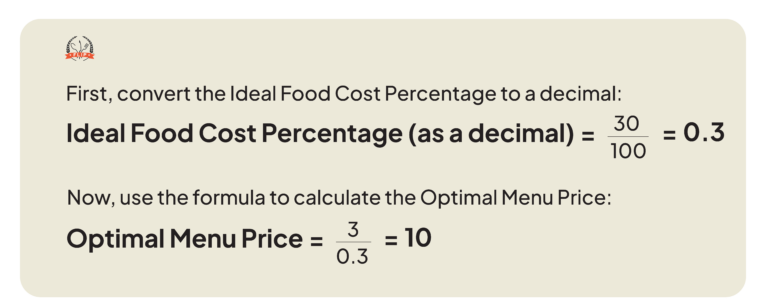
So, based on these figures, the optimal menu price for this item would be $10.
2. Calculate Your Food Prices Based on Ideal Gross Profit Margins
Your gross profit margin is the amount of money your business makes after its expenses have been paid.
To calculate your gross profit margin on a specific menu item, subtract the item’s food cost from its menu price and divide that by the menu price.

To illustrate this, a menu item is sold for $30 and the cost to prepare the item is $9. Now we just need to plug those values into the equation:
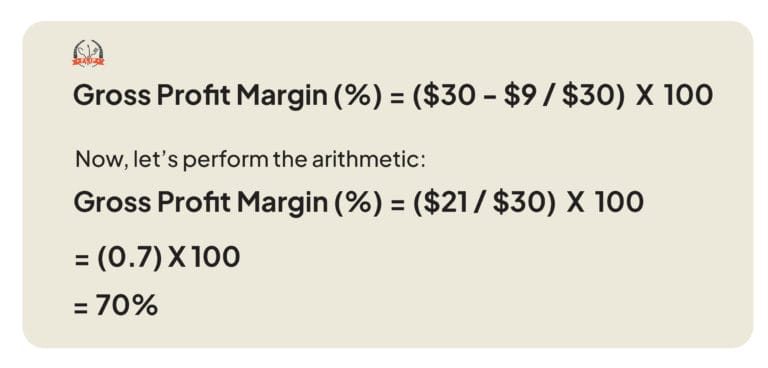
Our gross profit margin is 70% for this menu item.
Successful food businesses usually have a gross profit margin of at least around 70%, or 70 cents on every dollar. If your gross profit margins are lower, you can address this by changing your menu pricing.
But keep in mind that this might affect sales of the item, as well. While ideally every item on your menu will be profitable, you can also account for a slim margin on one product by making it up on another product.
For example, food businesses often sell beverages at a steep markup, which can help to make up for taking a slimmer profit on another item.
Once you know your gross profit margin, you can use that figure to determine how to price a food product by dividing cost per serving by one minus gross profit margin.

For example, let’s say your ideal gross profit margin is 60% or .6, and your cost per serving is $3.50. Plug these figures into the above formula and you’ll have the ideal menu price for profitability:

In this case, this menu item should cost the customer $8.75.
3. Set Your Prices Based on Competitors’ Food Pricing Strategies
If you operate in a highly saturated, competitive market, you may want to consider using the menu prices of other food vendors when determining your own prices. Doing so can help you stay relevant and maintain your share of the market.
There are three strategies to choose from when basing your prices on the competition: matching, going lower, or going higher than the competition’s price.
Each strategy has advantages and disadvantages, so you should consider them carefully when pricing your menu.
Matching Prices
This is a good option when competitors have a similar business concept or product as you. It allows you to keep up with the businesses around you without increasing or decreasing your share of the market.
Pricing Lower
Lower prices are appealing to customers looking for a good deal. However, it can also lead to a poor business perception.
Lowering your prices too much can also reduce your profit margin and make it difficult to stay in business.
Pricing Higher
Higher prices oftentimes suggest higher quality, which is appealing to some customers and can set your business apart from the competition. However, you can lose the interest of customers looking for a deal.
4. Adjust Food Pricing Based on Supply and Demand
If you operate your food business in an area with little or no competition but with a high demand for your food, you may be able to price your menu higher than normal.
This is a common practice for food vendors in areas like airports, food stadiums, and event centers, where customers cannot look elsewhere for better prices. This said, it is important to take into consideration your customers and cost of living. Recent data shows inflation can significantly impact restaurant dining habits.

FAQs About How to Price Food Products
How can food businesses effectively adjust their pricing strategies in response to fluctuating market conditions, such as changing food costs or economic trends?
Factors like fluctuating food costs, changing seasons, new competitors, and the economy can all influence your pricing strategy. You should reevaluate your menu prices whenever one of these conditions changes.
It’s also a best practice to reassess your pricing at least once a year and any time you notice a dip in revenue.
What are some common mistakes to avoid when implementing food pricing strategies?
Food pricing mistakes like charging too much can deter customers from trying your food, while low prices can create the perception that your product is cheap or low-quality.
Failing to align pricing with the market can also reduce your profits.
Finally, it’s important to be flexible with your menu, focusing on foods that sell. Consider cutting items that aren’t moving to reduce your overall food costs.
How can a food business effectively communicate price changes to customers to maintain goodwill and customer loyalty?
Address price increases with transparency and directness. If possible, post a notice that price bumps are coming so that your clientele isn’t surprised.
When you do adjust your menu, include a brief, friendly note reminding customers that higher prices mean better quality and continued service.
How are profit margins impacted by selling liquor?
Liquor sales have a higher profit margin—around 80%— so it can be lucrative to add a few cocktails to your menu. But, liquor license costs may be prohibitive, and the initial investment can be hefty compared to food.
You’ll also need to buy Liquor Liability Insurance to stay protected.
Maximize Your Profit With Food Liability Insurance
If you haven’t done so yet, you should take a look at FLIP’s insurance plans. Starting at just $299 per year or $25.92 per month, you can protect your business from claims with up to $2 million with general liability insurance, Tools and Equipment Coverage, and more. We also provide additional policy options to fit the needs of your business as it grows.
Find out how investing in Food Liability Insurance can help your business thrive even more and avoid costly expenses that can cut into your hard-earned profits.

By Lindsey Fliger
Ohio-based copywriter Lindsey Fliger leverages her experience as a lifelong foodie, dedicated home chef, and very decent baker. She holds a bachelor’s in English from Kent State University and a master’s in English Literature from The University of Akron. Before Veracity, she wrote about everything from kitchen tools to decadent wines at Zulily.
